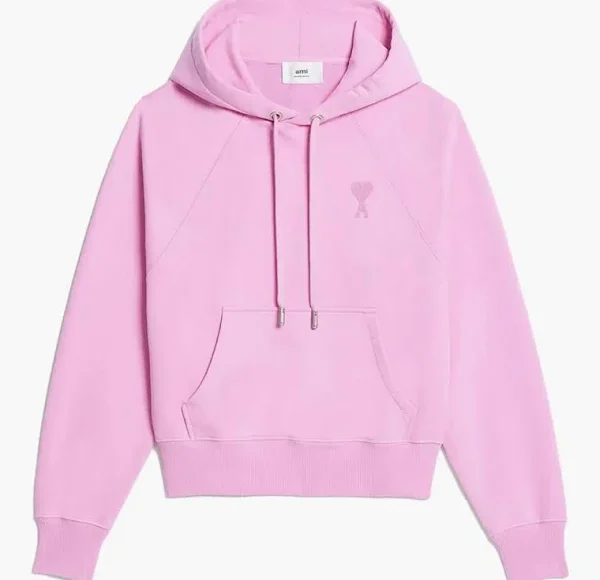Introduction to Social Media Influencer Marketing
In today’s digital-first world, social media influencer marketing has emerged as one of the most powerful strategies for brands to connect with audiences, build trust, and drive conversions. With millions of users spending a significant portion of their day on platforms like Instagram, TikTok, YouTube, and X (formerly Twitter), influencers act as modern-day word-of-mouth advocates. They shape purchasing decisions, promote brand awareness, and influence lifestyle trends. Social media influencer marketing is not just a passing trend; it’s a cornerstone of modern digital marketing strategies.
What is Social Media Influencer Marketing?
Social media influencer marketing is a form of collaboration where brands partner with individuals who have a strong online presence and a loyal following. These influencers can range from celebrities and macro-influencers with millions of followers to niche micro-influencers with a few thousand highly engaged fans. The goal is to leverage the influencer’s credibility and reach to promote a product, service, or message in a way that feels organic and trustworthy. This strategy helps brands cut through the noise of traditional advertising and tap into authentic, peer-driven recommendations.
Why Influencer Marketing Works
Unlike traditional ads that can often feel intrusive or impersonal, influencer marketing operates within the realm of trust. People follow influencers because they admire their lifestyle, relate to their content, or value their expertise. When an influencer endorses a product, their followers perceive it as a genuine recommendation rather than a paid promotion. This trust factor significantly enhances engagement rates, increases brand recall, and drives purchase intent. Moreover, influencer marketing aligns perfectly with the rise of ad fatigue and growing consumer skepticism toward hard-sell marketing tactics.
Types of Social Media Influencers
Influencers come in all shapes and sizes, and their classification is often based on follower count and niche. Mega-influencers are celebrities or public figures with over a million followers. They offer massive reach but may lack the personal connection with their audience. Macro-influencers have between 100K to 1 million followers and are ideal for broader campaigns. Micro-influencers, with 10K to 100K followers, often have higher engagement rates and closer relationships with their audience. Lastly, nano-influencers have fewer than 10K followers but boast hyper-targeted audiences and extremely loyal communities. Choosing the right type of influencer depends on campaign goals, target audience, and budget.
Popular Social Media Platforms for Influencer Marketing
Instagram is a dominant platform for influencer marketing due to its visual nature, Stories, Reels, and IGTV features. It’s ideal for lifestyle, beauty, fashion, travel, and food-related content. YouTube excels in long-form content, unboxing videos, tutorials, and vlogs. It provides influencers a platform to go in-depth with product reviews and storytelling. TikTok has surged in popularity for its short, creative videos that quickly go viral, making it perfect for reaching Gen Z and younger millennials. X is used for thought leadership, commentary, and tech-focused campaigns. Pinterest, LinkedIn, and Facebook also offer unique opportunities depending on the target audience and campaign style.
Benefits of Social Media Influencer Marketing
One of the biggest advantages of influencer marketing is its ability to deliver authentic content that resonates with a specific audience. It helps brands reach highly targeted customer segments through trusted voices. Influencer campaigns are also cost-effective compared to traditional advertising. Brands can run multiple micro-influencer campaigns for the price of a single celebrity endorsement. Another key benefit is the variety of content generated—images, videos, blog posts, and more—that brands can repurpose for their own social media, ads, or website. Moreover, influencer marketing boosts SEO, increases website traffic, and provides measurable ROI.
How to Create a Successful Influencer Marketing Strategy
Developing an effective influencer marketing strategy requires a clear plan and defined goals. Start by identifying your target audience and the platforms they use. Next, set specific campaign objectives such as brand awareness, engagement, lead generation, or sales. Then, select the right influencers based on your audience, brand values, and content style. Reach out with a compelling pitch that outlines the value exchange and expectations. Collaborate on content creation while allowing influencers creative freedom to maintain authenticity. Monitor campaign performance using KPIs like reach, impressions, clicks, conversions, and engagement rate. Finally, analyze results and refine your approach for future campaigns.
Choosing the Right Influencer for Your Brand
Selecting the right influencer is critical to your campaign’s success. Start by evaluating their audience demographics—age, location, gender, and interests. Check their engagement rate by analyzing likes, comments, and shares relative to their follower count. Review their content quality, tone, and consistency to ensure alignment with your brand voice. Look at past brand partnerships and assess whether they were executed professionally. Use influencer marketing platforms and tools to streamline this research. Also, conduct a thorough audit to identify any fake followers, bot engagement, or controversial behavior that could harm your brand reputation.
Crafting Effective Influencer Campaigns
A well-executed influencer campaign strikes a balance between brand messaging and influencer creativity. Define your campaign message and unique selling proposition (USP). Provide influencers with clear guidelines, brand assets, hashtags, and CTAs, but don’t script their content. Encourage them to share personal stories, testimonials, or tutorials that naturally incorporate your product. Use formats like giveaways, product reviews, challenges, and takeovers to enhance engagement. Time your campaign around product launches, events, or seasonal trends for maximum impact. Most importantly, foster a relationship of trust and respect with your influencers to build long-term collaborations.
Tracking and Measuring Influencer Marketing Performance
Tracking performance is vital to assess ROI and optimize future efforts. Key metrics include reach, impressions, engagement (likes, comments, shares), click-through rates, website traffic, and conversions. Use UTM links, affiliate codes, and platform analytics to track user behavior. You can also implement post-campaign surveys or brand lift studies to measure awareness and perception changes. Influencer marketing platforms like Aspire, Upfluence, or GRIN offer in-depth analytics dashboards. Compare campaign results to your initial KPIs to determine success and identify what worked well or what needs improvement.
Trends Shaping the Future of Influencer Marketing
Influencer marketing continues to evolve rapidly. One major trend is the rise of AI-generated influencers and virtual avatars like Lil Miquela, which blend tech and branding creatively. Another trend is the shift toward long-term influencer-brand partnerships instead of one-off collaborations. These relationships create more meaningful storytelling and brand loyalty. Video content, particularly on TikTok and Instagram Reels, is dominating engagement and should be prioritized. Social commerce is also on the rise, where users can shop directly from influencer posts or livestreams. Additionally, brands are emphasizing diversity, authenticity, and inclusivity in influencer campaigns to reflect real-world audiences.
Micro vs. Macro Influencers: Which is Better?
Both micro and macro-influencers offer distinct advantages. Micro-influencers are ideal for niche targeting and generate high engagement due to their close-knit communities. They often feel more relatable and trustworthy to their followers. Macro-influencers offer broader reach and are suited for national or global brand campaigns. They help boost brand visibility and are effective for quick, large-scale awareness. The choice between the two depends on your budget, goals, and the depth of audience connection you’re seeking. In many cases, combining both can yield excellent results by blending reach with authenticity.
Influencer Marketing in Different Industries
Influencer marketing is versatile and works across various industries. In fashion and beauty, influencers showcase product usage, styling tips, and tutorials. In travel, influencers share destination guides, hotel experiences, and itineraries that inspire followers to explore. Tech influencers review gadgets, apps, and innovations, offering credibility to tech-savvy consumers. In food and beverage, influencers post recipe videos, dining experiences, and taste tests. Even B2B industries are leveraging LinkedIn influencers for thought leadership and professional insights. Regardless of the industry, influencer marketing allows brands to humanize their message and create meaningful connections.
Common Mistakes to Avoid in Influencer Marketing
One of the most common mistakes is partnering with the wrong influencer—someone whose values or audience don’t align with your brand. Another misstep is overly controlling the content, which can make it feel forced and inauthentic. Ignoring legal compliance and disclosure guidelines can damage your reputation and lead to fines. Failing to set clear goals or measure results can waste your marketing budget. Also, overlooking the importance of engagement over follower count can result in poor campaign performance. To succeed, treat influencer marketing as a strategic partnership, not just a transactional promotion.
Legal and Ethical Considerations
Transparency and compliance are essential in influencer marketing. Most countries require influencers to disclose paid partnerships using hashtags like #ad or #sponsored. Brands must ensure influencers follow FTC (in the U.S.) or ASCI (in India) guidelines to avoid misleading consumers. Contracts should outline payment terms, content rights, deadlines, and deliverables. It’s also ethical to respect influencer autonomy and allow creative freedom. Avoid manipulating content or forcing reviews that don’t reflect genuine experiences. Ethical influencer marketing builds long-term trust with both influencers and consumers.
The Role of User-Generated Content
Influencer marketing often sparks a wave of user-generated content (UGC), where followers share their own experiences with your product. This content acts as social proof and enhances brand credibility. Brands can encourage UGC by hosting contests, challenges, or encouraging customers to tag them. UGC can then be repurposed in ads, social posts, or product pages. It increases community involvement and allows your customers to become your brand advocates. Influencer campaigns that inspire UGC are often more engaging and far-reaching.
Influencer Marketing and SEO
Influencer marketing can also improve your search engine visibility. When influencers mention your brand or link to your website from their blogs or videos, it creates valuable backlinks that boost your SEO. Increased traffic, social shares, and branded searches signal authority to search engines. Additionally, the content created by influencers often ranks well in search results, especially for product reviews or tutorials. This extended online footprint helps build your digital presence and supports your broader content marketing goals.
Conclusion: The Future is Influencer-Driven
Social media influencer marketing is no longer optional—it’s a vital component of every successful digital marketing strategy. As consumer trust continues to shift from brands to individuals, influencers hold the key to creating authentic connections and driving brand growth. Whether you’re launching a new product, expanding into new markets, or looking to engage with your audience on a deeper level, partnering with the right influencers can deliver impactful results. By staying ahead of trends, focusing on authenticity, and building genuine relationships, brands can harness the full potential of influencer marketing in today’s social media landscape.















Leave a comment